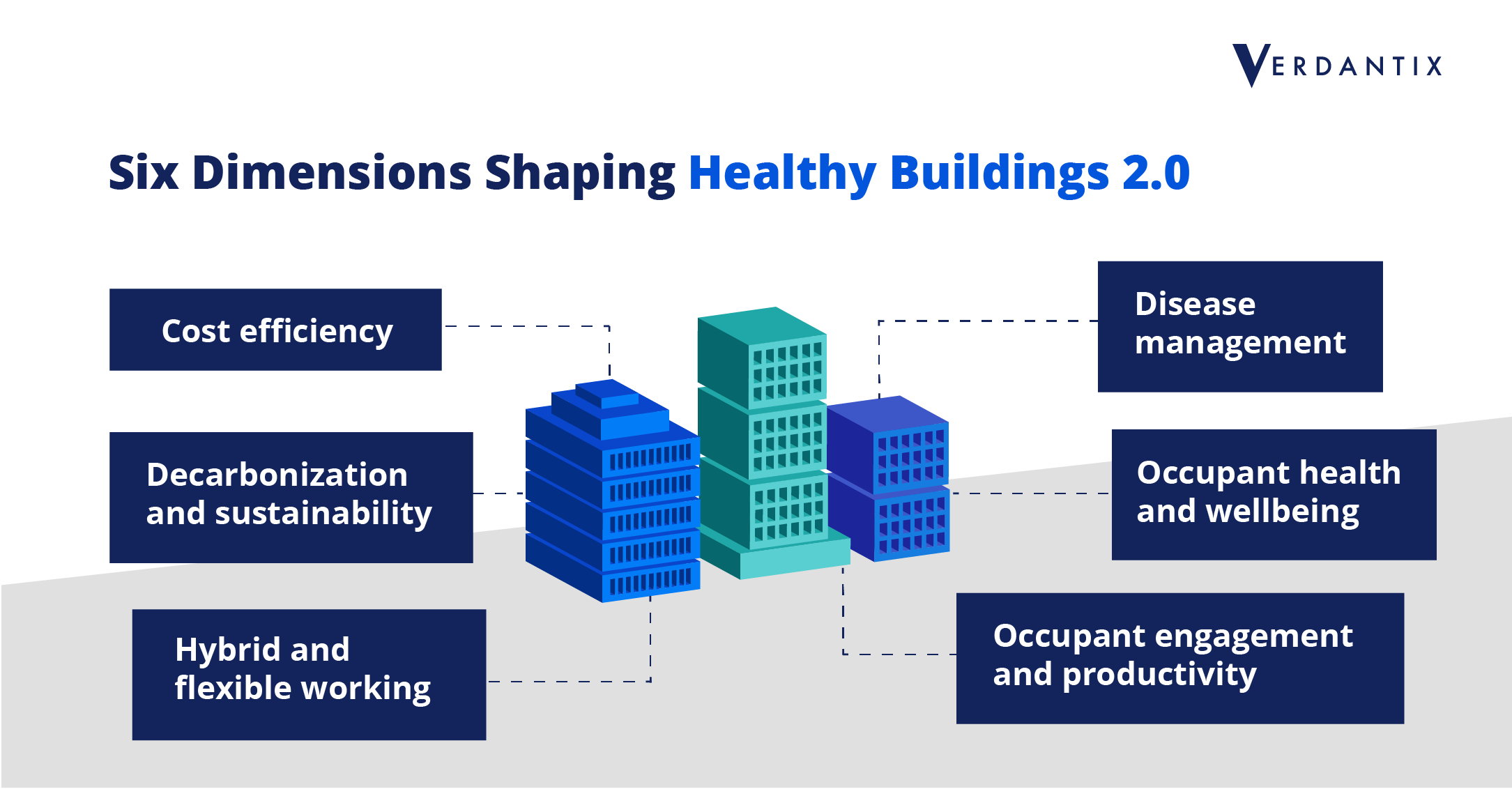Introducing Healthy Buildings 2.0

Ben Hext
Since the COVID-19 pandemic, interest in healthy buildings has increased dramatically amongst employers and building technology providers, and as a result, it is emerging as a major trend in the smart buildings market. This topic is evolving rapidly from its roots in addressing sick building syndrome during the 1980s toward a broader, high-impact real estate initiative that tackles occupant health, employee experience, and facilities optimization. Healthy Buildings 2.0 defines the shift of healthy buildings from a health and disease-orientated initiative toward a multi-dimensional programme that aligns with wider real estate strategies, such as cost reduction and decarbonization. As delivering healthy buildings becomes more demanding firms must look beyond older techniques by considering technology in their strategies.
For firms to make the leap to Healthy Buildings 2.0, they must align future technology investments with solutions that deliver multi-dimensional and quantifiable benefits. For example, IAQ sensors have seen wide take-up, enabling facilities managers to monitor indoor environments for CO2, particulate matter (PM), volatile organic compounds (VOCs), and humidity to indicate the risk of disease transmission and identify areas with poor IAQ. Firms can use the data to monitor indoor conditions for occupant comfort and health, and inform facilities management strategies, such as HVAC control schedules, maintenance, and capital planning. In another example, the shift towards hybrid working has led to employees feeling happier, leading to a rise in workplace apps to maintain engagement and enable initiatives such as space booking, equipment ordering, maintenance requests, and colleague communication. Employers are also cognizant of mental health problems amongst their workforce and offer digital health and wellbeing solutions through mobile apps, such as Headspace and Refresh, to improve satisfaction and productivity and reduce costs.
Healthy Buildings 2.0 is causing real estate executives to consider a wider range of technologies when addressing strategies across cost reduction, occupant wellbeing, and decarbonization. To find out more about the healthy buildings technologies that can enhance your strategy attend the Verdantix webinar How To Design A Successful Healthy Buildings Strategy.

About The Author

Ben Hext
Industry Analyst





